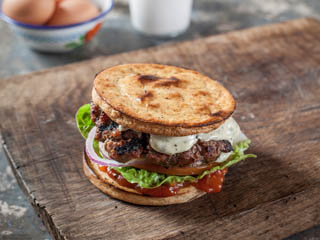
Fast casual dining, which combines elements of fast food and casual dining, is booming in the US, and it’s taking hold in Australia, too.
Euromonitor recorded its year on year growth in Australia to be 18.7 percent in 2012-13.
In contrast, the traditional chained fast food sector recorded a year on year growth of 2.8 percent over the same period.
While fast food’s reach is currently far greater in Australia – research by Euromonitor analyst Julia Illera reveals the segment is growing – in 2008 it comprised two percent of the chained fast food sector, meanwhile in 2013 the figure grew to 5.7 percent.
The overall compound annual growth rate (CAGR) of fast casual dining in Australia between 2008 and 2013 was 30 percent, meanwhile within chained fast food it was 5.10 percent.
In Australia Euromonitor classifies the following brands as fast casual:
- Nando’s
- Schnitz
- Grill’d
- Urban Burger
- Salsa’s Fresh Mex Grill
- Mad Mex
- Guzman Y Gomez
- Zambrero
The 2014 Fast Casual Executive Summit
Executives from the fast casual market’s largest operators in the US recently descended on Denver, Colorado for the 2014 Fast Casual Executive Summit to discuss key trends within the sector.
Elizabeth Friend, senior analyst – consumer foodservice at Euromonitor took away five key strategies from the summit, which she believes will underline sector development in the new year.
While the summit was US focused, in many instances the following five points can be applied to Australia’s fast casual dining market.
1. The rise of mobile
Mobile ordering and payments are no doubt on the rise; however they need to be implemented appropriately.
“The services were one of the most-discussed topics at the conference,” said Friend.
“However, it was also stressed that the technology needs to be carefully implemented and executed in order to maximise its benefits. As stated by Mike Cancro, CEO of Jersey Mike’s, “technology is an enabler, not an endgame,” and therefore operators need to be able to build an internal infrastructure within the outlet to adequately support such upgrades.”
2. Changing food trends
It was recognised consumer preferences are constantly changing, and so operators are eagerly seeking out the next food trend.
“Pizza was highlighted as an upcoming growth area, following in the footsteps of better burgers as a way to redefine a classic American dining experience,” said Friend
Randy Gier, CEO of Pizza Inn Holdings (Pizza Inn, Pie Five) explained fast-casual pizza offers a number of benefits to the customer.
Friend said Gier commented, in his own words: “Fast-casual pizza offers customers a way to have a quick, inexpensive pizza for lunch without sacrificing any of the benefits that make pizza at other dining occasions so appealing.”
She said Indian food was also identified as a potential trend – a reflection of people’s penchant for Asian and Latin American flavours, meanwhile it is expected protein-enriched menu items will continue to gain popularity as a result of their health benefits.
3. Beverages the key brand differentiator
Friend explained the fast-casual segment is underlined by its streamlined menu, which includes simple items such as burgers and pizzas – it essentially sees brands offer similar products and subsequently seek out that differentiating factor.
“Beverages offer operators the opportunity to establish an identity that goes beyond core menus items, helping to send a message about who its customers are and what occasions it serves,” she said.
4. Multiple service channels
“Delivery, drive-through, and takeaway were also key areas of discussion at the conference, as operators looked for ways to maximise traffic and throughput,” said Friend.
The notion that service channels need to operate in line with the brand offering was highlighted as important – Friend offers an example.
“Drive-throughs were highlighted as a way for operators to increase efficiency and cater to customers who have traded up from fast food but still value a very quick, convenience-focused experience; however; drive-through lanes also necessitate larger outlets and standalone locations, which don’t fit well with every fast-casual concept’s business model,” she said.
5. Targeted marketing
Fast casual is broadening its reach beyond Gen Y, which means operators need to delve a little deeper and figure out who exactly there target audience is – it might not necessarily be 18-35 year olds anymore.
At the summit Jeff Fromm, the co-author of Marketing to Millenials, stated that marketers need to ensure they market to their target audience in the right way.

